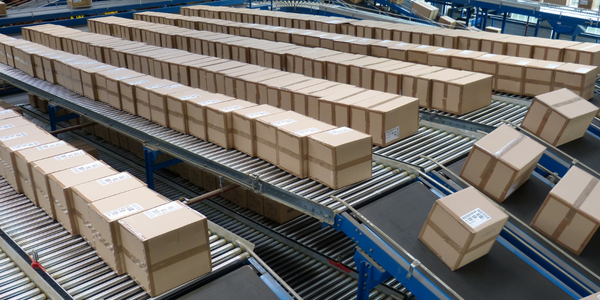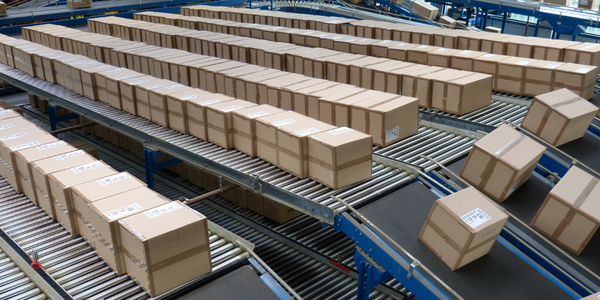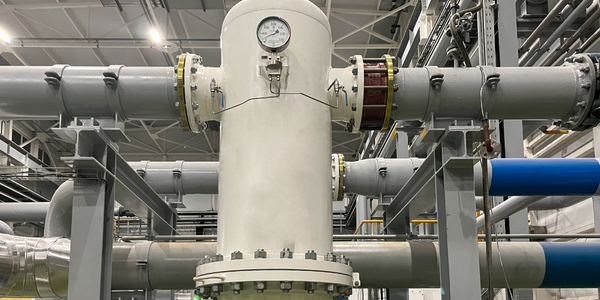技术
- 功能应用 - 库存管理系统
- 功能应用 - 仓库管理系统 (WMS)
适用行业
- 金融与保险
- 包装
适用功能
- 维护
- 仓库和库存管理
用例
- 智能包装
- 库存管理
关于客户
YV Packaging 是一家全国性企业,总部位于原始的亚拉河谷。该公司从事水果和农产品包装业务已有 20 年,主要为当地种植者提供支持。该业务的核心是纸板箱和塑料篮的销售。尽管是一家全国性企业,YV Packaging 坚定致力于支持当地种植者。公司董事总经理 Glenn Barker 积极参与日常运营和决策流程,包括实施新的软件解决方案以改善业务运营。
挑战
YV Packaging 是一家位于亚拉河谷的全国性水果和农产品包装企业,其库存管理面临着重大挑战。该公司使用的是 Reckon Accounts,这是一种会计软件,该软件并不是专门为处理库存而设计的。结果,该公司不得不严重依赖人工盘点库存。董事总经理 Glenn Barker 注意到最新计数与之前的计数之间存在巨大差异,这是人为错误造成的。这对公司来说是一个重大问题,因为它影响了库存数据的准确性,并可能影响他们履行订单的能力。
解决方案
为了解决库存管理挑战,YV Packaging 实施了 Fishbowl Warehouse,同时保留 Reckon Accounts 作为其会计软件包。 Fishbowl Warehouse是一款综合性的库存管理软件,几乎满足了公司的所有需求。最初未满足的一项要求已通过 Fishbowl 维护计划得到解决,该计划提供定期更新。最新版本的 Fishbowl 能够满足业务的所有需求。 Fishbowl 和 Reckon Accounts 之间的集成过程很顺利,尤其是在上传库存数据时。客户、供应商、库存和库存金额导入到 CSV 文件中,然后上传到 Fishbowl。如果文件中存在任何错误,Fishbowl 会指示发现错误的行,以便快速纠正。
运营影响

Case Study missing?
Start adding your own!
Register with your work email and create a new case study profile for your business.
相关案例.

Case Study
IoT Data Analytics Case Study - Packaging Films Manufacturer
The company manufactures packaging films on made to order or configure to order basis. Every order has a different set of requirements from the product characteristics perspective and hence requires machine’s settings to be adjusted accordingly. If the film quality does not meet the required standards, the degraded quality impacts customer delivery causes customer dissatisfaction and results in lower margins. The biggest challenge was to identify the real root cause and devise a remedy for that.

Case Study
Zenon the Ideal Basis for An Ergonomic HMI
KHS develops and produces machines and equipment for filling and packaging in the drinks industry. Because drinks manufacturing, filling and packaging consist of a number of highly complex processes, the user-friendly and intuitive operation of equipment is increasingly gaining in significance. In order to design these processes as simple as possible for the user, KHS decided to introduce a uniform, transparent and standardized solution to the company. The HMI interface should meet the requirement for people with different qualifications and enable them to work on a standard platform.

Case Study
Real-time In-vehicle Monitoring
The telematic solution provides this vital premium-adjusting information. The solution also helps detect and deter vehicle or trailer theft – as soon as a theft occurs, monitoring personnel can alert the appropriate authorities, providing an exact location.“With more and more insurance companies and major fleet operators interested in monitoring driver behaviour on the grounds of road safety, efficient logistics and costs, the market for this type of device and associated e-business services is growing rapidly within Italy and the rest of Europe,” says Franco.“The insurance companies are especially interested in the pay-per-use and pay-as-you-drive applications while other organisations employ the technology for road user charging.”“One million vehicles in Italy currently carry such devices and forecasts indicate that the European market will increase tenfold by 2014.However, for our technology to work effectively, we needed a highly reliable wireless data network to carry the information between the vehicles and monitoring stations.”

Case Study
Safety First with Folksam
The competitiveness of the car insurance market is driving UBI growth as a means for insurance companies to differentiate their customer propositions as well as improving operational efficiency. An insurance model - usage-based insurance ("UBI") - offers possibilities for insurers to do more efficient market segmentation and accurate risk assessment and pricing. Insurers require an IoT solution for the purpose of data collection and performance analysis

Case Study
Sparks Dynamics Assists Atlas Container Secure a $15,000 BGE Energy Rebate
The ReMASTER Compressed Air Monitoring system was installed in 2015. This system is capable of monitoring compressed air system parameters on a continuous basis and transferring that information to a cloud server which can be accessed by Atlas Container personnel, Industrial Diagnostics and Sparks Dynamics. This information was collected into a database which can be exported to an Excel spreadsheet or displayed graphically using Sparks Dynamics ViewMaster Software. The average annual compressed air electricity expense was estimated to be approximately $116,000. This is based on an incremental $/KWh electric rate of $.091 per KWh and an estimated compressed air energy consumption of 1,279,200 KWH. The implementation phase of Energy Conservation Measures (ECMs) for the Compressed Air System included: • Identification and repair of compressed air leaks • Understanding of compressed air usage per manufacturing machine and installation of shut off valves when the machines are no longer in production mode • Identification of misapplications of compressed air to include blow offs, venturis, and cooling scenarios • Understand system pressure requirements and potential installation of point of use pressure regulation.

Case Study
Smooth Transition to Energy Savings
The building was equipped with four end-of-life Trane water cooled chillers, located in the basement. Johnson Controls installed four York water cooled centrifugal chillers with unit mounted variable speed drives and a total installed cooling capacity of 6,8 MW. Each chiller has a capacity of 1,6 MW (variable to 1.9MW depending upon condenser water temperatures). Johnson Controls needed to design the equipment in such way that it would fit the dimensional constraints of the existing plant area and plant access route but also the specific performance requirements of the client. Morgan Stanley required the chiller plant to match the building load profile, turn down to match the low load requirement when needed and provide an improvement in the Energy Efficiency Ratio across the entire operating range. Other requirements were a reduction in the chiller noise level to improve the working environment in the plant room and a wide operating envelope coupled with intelligent controls to allow possible variation in both flow rate and temperature. The latter was needed to leverage increased capacity from a reduced number of machines during the different installation phases and allow future enhancement to a variable primary flow system.







